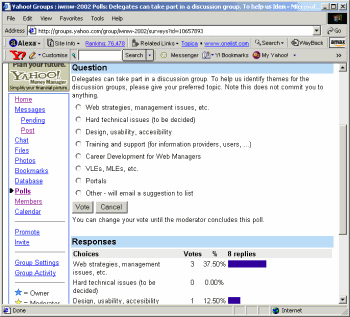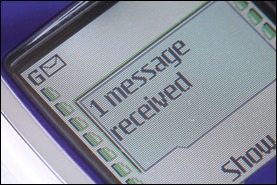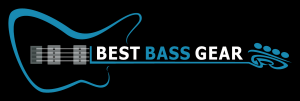This article is going to take a decidedly nerdy slant with no apologies for it whatsoever.
I first connected to the internet in 1996, which at the time of this writing was 17 years ago. And I remember seeing bands starting to do the online thing around 1998. And yes, Microsoft Windows 98 had a lot to do with that because it had many multimedia improvements over Windows 95 that allowed for more audio and video capability.
One such example is RealPlayer, shown above. For those if you that have been on the internet since the late 1990s, your first taste of streaming online audio and video was most likely through RealPlayer. Yes, it was terrible. A dial-up connection could barely eke out 5 frames per second for a 160×120 video (which in modern terminology would be “120p”), and streaming audio was mono-only and “washy”-sounding due to high compression and an 8000Hz-or-less (even as low as 5333Hz) audio quality rate.
Here are some ways bands used internet in the 90s:
Getting the audio to the people
Very few bands had streaming audio because there was basically no way to do it for free.
Bands with actual money could rent a server that would serve RealAudio files (to be used with RealPlayer only), where fans could click a link and take a listen. But being most bands didn’t have the cash to spend on something like that (which was somewhere around $50/month back in the day), most didn’t bother.
Instead, band members who knew how to do computery stuff would encode very low-quality MP3 files, upload those via FTP to “home page space” provided by their ISP and have fans download them. The files were low-quality for two reasons. First it was to get them as small as possible because server space was very limited, and secondly to force people into buying CDs of the music for the high-quality version.
And no, there was no way to sell digital audio files in the 1990s. iTunes didn’t exist, nor did any other digital audio marketplace because it hadn’t been established at that time and wouldn’t for a few years yet. Everything was still CDs back then.
Band web site
What was used here was GeoCities, AngelFire or a page hosted by one of the band member’s ISP accounts. The address would be something ridiculously long and impossible to remember like home.earthlink.net/~bob27/bandname/index.html or something equally ridiculous.
Oh, and let’s not forget nobody used Google at this time because in 1998 Google was brand new, and everyone was still using Yahoo! as the #1 place to search for stuff online. Being that Y! at that time was almost 100% human-populated (no automated “crawler” bots), web sites had to be added in manually.
Use a social media page, you say? Ha! Didn’t exist in the 90s.
One of the earliest examples of a band web site was the popular 80s glam band Slaughter with slaughterweb.com. You can see an archive of that here. Metallica.com has also been online since 1998.
Connecting with the fans
This was done in 1 of 4 ways. Either a guestbook was used, a forum, a “groups” account or an email newsletter.
Guestbook
The guestbook was only used by bands with GeoCities web pages. You can basically think of it as one long forum thread. Guestbooks died when spammers discovered they could program spambots to pollute the crap out of them since guestbooks had no spam protection whatsoever.
Another version of the guestbook was called the shoutbox. Same concept; smaller box; just as easily spammed as the guestbook was, unfortunately.
Forum
There were very few web sites offering free forums in the late 1990s, but one of them was BraveNet.


The most popular “groups” service back in the day was Yahoo! Groups, launched in 1998. However, many abandoned the system after Y! kept changing things around to the point of making the system almost unusable. Social media of the modern era has all but completely swept away groups-style web services.
Email newsletter
The email newsletter was run by bands who had their own web sites. It was rare to see this because you had to be really nerdy back then to even know how to install one much less operate it.
In fact, some didn’t operate a newsletter at all and just mass-emailed people manually back when you could get away with doing that without your ISP shutting down your email account.
You’ve got it so easy now that it’s not even funny
Today, it’s stupidly easy to get just about everything done for a band’s internet presence for zero cost.
For the band’s site, a Facebook page, Blogger.com or WordPress.com blog, or ReverbNation page can be used. Even Tumblr could be used. All free; all easy.
For getting the audio out to the people, you have YouTube and/or SoundCloud and/or ReverbNation for that. All free.
Free forums are plentiful, such as ProBoards; you can have a forum up and running in literally just minutes.
The only cost would be for the newsletter if you used a service like MailChimp, but only if you pass 2,000 subscribers on that particular service (from 1 to 1,999 the service is free). As fate would have it, the email newsletter is still the best way to connect to fans to this day. As ancient as the email format is, it still works and has stood the test of time. Web services have come and go, but email endures and is still a top choice for both bands and business in general to stay connected with the fans.


I’m actually surprised more bands aren’t using mass-texting services now to notify fans of stuff the band is doing, because as more people are getting connected with smartphones, text messaging just gets that much more important. People on the computer do email, and people on mobile do texting so you might as well cover both the PC crowd and the mobile crowd by using both messaging formats. Makes sense.
Final nerdy note: Yes, it is possible to mass-text cell phones now via email since every cell phone can be emailed. For example, if you want to know what your cell phone’s address is, grab your phone, type up a text message, address it to your email address and send. After a minute or so you will receive the message in your email and from there you can see what your phone’s email address is. And remember, when sending any email to a cell phone address, always use plain text. Formatting like bold, italic and so on doesn’t work on a lot of phones and will appear to be garbage characters.



